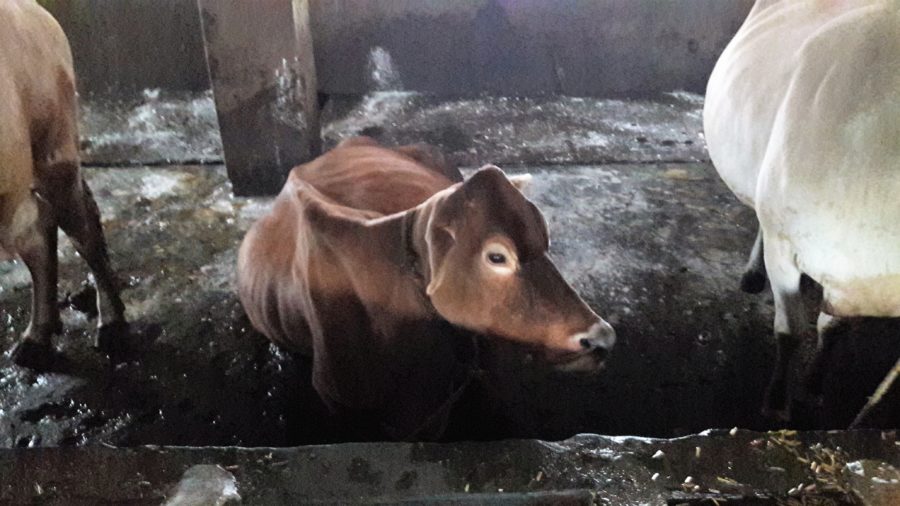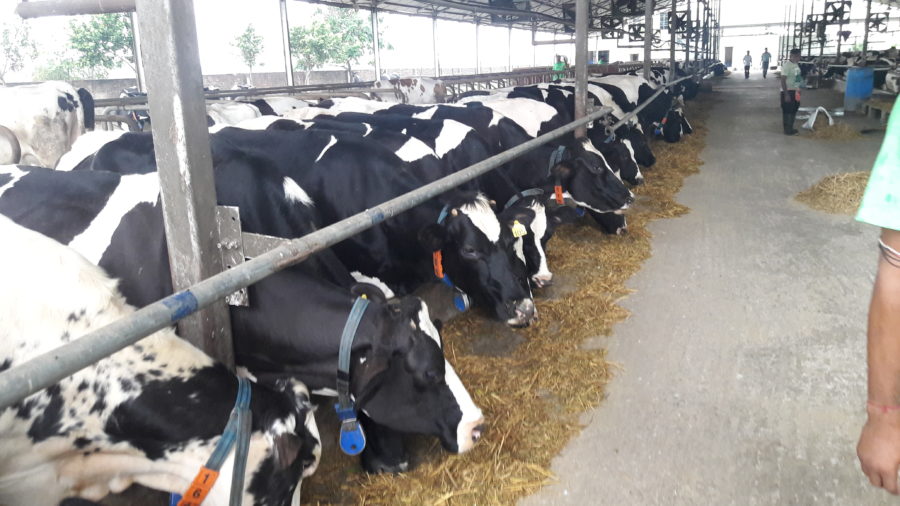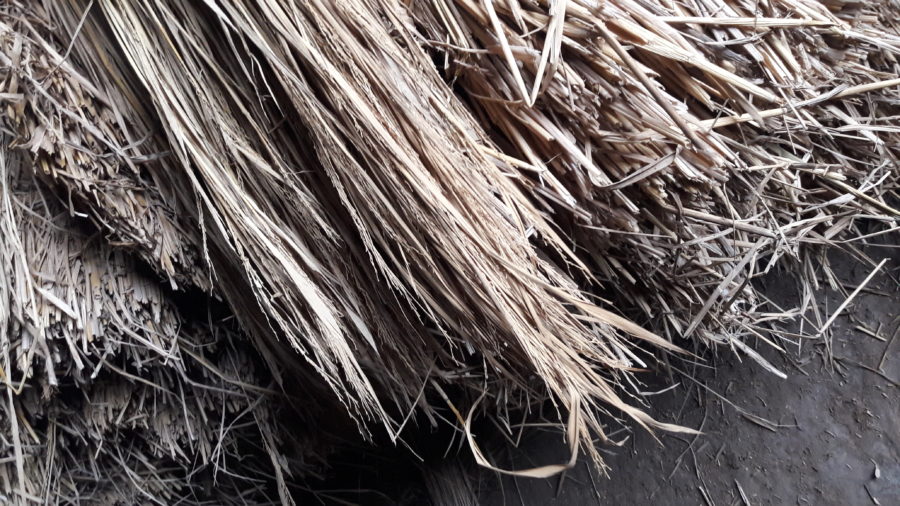2nd December 2016 Kolkata, India
White revolution

There are about 123 million cattle in India, so the Kolkata based Telegraph newspaper informed me recently. The paper was citing India’s 2012 national cow census. That’s a lot of cattle, or roughly one for every ten Indians.
The equivalent number in Britain is 1.9 million. This is the size of the total dairy herd according to figures from the Department of Environment, Food and Rural Affairs (DEFRA), or one to every 33 Britons.
I grew up on a farm with cows, and both my father and mother came from farming families. The smell of cow manure and sound of cattle mooing are very familiar to me and evoke happy memories. We used to drink chilled fresh milk every morning that was delicious. I still enjoy seeing cattle calmly chewing away on their cud – the regurgitated grass that they grind down with their large back molars.
I know cows like nothing better than a rub or scratch behind their ears and horns – one part of the body they have difficulty reaching. They will often try to rub that area on a tree or post (but you need to approach them slowly and gain their confidence before you reach out to scratch them.)
Of course, there is a big difference between Britain and India towards cattle. Hindus consider the cow a sacred animal, because it provides milk and helps sustain human life. I guess most Britons think of the cow as just another farm animal. I’m probably one of the few people in Britain who have an affinity with cows.
In Britain, cows are usually kept in enclosed fields in the countryside. Whereas here in India, cows roam all over the place. I know that many people keep a few cows which are an important source of income for them. After four months here, I still find it odd when I see cattle in the middle of built up areas, standing in the middle of a road, or nosing in rubbish searching for sustenance.
 I was happy to re-connect with my farming upbringing last month, when I visited farms outside Kolkata to learn about cattle breeding. A British company, ABS Genus, is working with Bengal Nestor’s Industries Ltd, a West Bengal company, to set up a cattle breeding centre to improve the genetic stock of the cattle in the state.
I was happy to re-connect with my farming upbringing last month, when I visited farms outside Kolkata to learn about cattle breeding. A British company, ABS Genus, is working with Bengal Nestor’s Industries Ltd, a West Bengal company, to set up a cattle breeding centre to improve the genetic stock of the cattle in the state.
The reason for this venture is that the stock of cattle in West Bengal didn’t benefit from the ‘white revolution’ that occurred in other parts of India. Also known as ‘Operation Flood’, this was the major effort in the 1970s to transform India’s dairy industry by increasing milk production to turn India from being an importer of milk to self-sufficiency. The plan succeeded but the output of some dairy cattle is still quite low.
One element of the revolution was the introduction of foreign breeds of cattle that produced higher milk yields. The most successful foreign breed has been the Holstein, which is a large black and white cow that produces high volumes of milk. Popular also are Jerseys, a smaller pale brown breed with a distinctive shorter face which produces milk with high fat content. Although the foreign breeds were introduced in other parts of India, few reached West Bengal.
With representatives of the two companies, I visited farms in the state and talked at some length about the business of cattle breeding and genetics. At one farm, we saw a herd with crossbreeds of all sorts. A second was stocked almost exclusively with Holstein crossbreeds. Overall, the crossbreeds from foreign cattle produced about double the milk yield of domestic Indian breeds, like the gyr.
You can only go so far in mixing the genes because of the very different climatic conditions. Cattle from temperate climates aren’t equipped to deal with the heat, the different pests and diseases in India. ABS Genus advise only two generations of crossbreeding, or 75% of non-native genetics in a cow.
I understand this problem with bloodlines. A hundred years ago, my great-grandfather had a herd of Shorthorns. He won a large cup for his prize herd – my brother still has the cup. The cow was dual purpose – it was a hardy animal bred for both milk and meat, but their milk yield was modest.
 As the population of Britain grew and farming became more intensive, the need for higher yielding breeds grew. My father inherited a mixed herd and tried to breed Ayrshires, which produces more milk. However, he had difficulty breeding them, so he instead turned to Friesians, a large black and white cow which is almost indistinguishable from Holsteins. The cows bred well and were the mainstay of his herd when I was young.
As the population of Britain grew and farming became more intensive, the need for higher yielding breeds grew. My father inherited a mixed herd and tried to breed Ayrshires, which produces more milk. However, he had difficulty breeding them, so he instead turned to Friesians, a large black and white cow which is almost indistinguishable from Holsteins. The cows bred well and were the mainstay of his herd when I was young.
The technology is now so much more advanced. Bloodlines can be tested more easily, and with IT and such as collars on the cows, herdsmen can see how much each cow yields, how much it moves around and other such details. While predicted yields from cross bred cows are more accurate, there is still a risk that a crossbred cow won’t be as productive as farmers would want.
I hope that ABS Genus and Nestor will succeed in raising the milk yields of the cows in West Bengal. I know milk is an important element in the diet, and is used in many dishes, especially desserts. My favourite is Mishti Doi – which (I think) is fermented milk, yoghurt and sugar. But if anyone wants to give it to me, please keep the amount of sugar down!